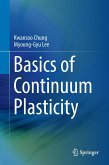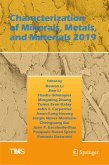This textbook provides a fast-track pathway to numerical implementation of phase-field modeling-a relatively new paradigm that has become the method of choice for modeling and simulation of microstructure evolution in materials. It serves as a cookbook for the phase-field method by presenting a collection of codes that act as foundations and templates for developing other models with more complexity. Programming Phase-Field Modeling uses the Matlab/Octave programming package, simpler and more compact than other high-level programming languages, providing ease of use to the widest audience. Particular attention is devoted to the computational efficiency and clarity during development of the codes, which allows the reader to easily make the connection between the mathematical formulism and the numerical implementation of phase-field models. The background materials provided in each case study also provide a forum for undergraduate level modeling-simulations courses as part of their curriculum.
- Emphasizes the numerical aspects of phase-field modeling;
- Explains both the underlying physics and formulism of phase-field modeling;
- Reinforces reader understanding with a collection of algorithms;
- Adopts a cross-disciplinary approach to PFM relevant to students of engineering, physics, biology, and other disciplines concerned with microstructure evolution and solutions to interfacial problems;
- Includes all necessary source code, downloadable from the publisher.
Dieser Download kann aus rechtlichen Gründen nur mit Rechnungsadresse in A, B, BG, CY, CZ, D, DK, EW, E, FIN, F, GR, HR, H, IRL, I, LT, L, LR, M, NL, PL, P, R, S, SLO, SK ausgeliefert werden.
Es gelten unsere Allgemeinen Geschäftsbedingungen: www.buecher.de/agb
Impressum
www.buecher.de ist ein Shop der
buecher.de GmbH & Co. KG
Bürgermeister-Wegele-Str. 12,
86167 Augsburg
Amtsgericht Augsburg HRA 13309
Persönlich haftender Gesellschafter: buecher.de Verwaltungs GmbH
Amtsgericht Augsburg HRB 16890
Vertretungsberechtigte:
Günter Hilger, Geschäftsführer
Christian Sailer, Geschäftsführer
Sitz der Gesellschaft:Augsburg
Ust-IdNr. DE 204210010









